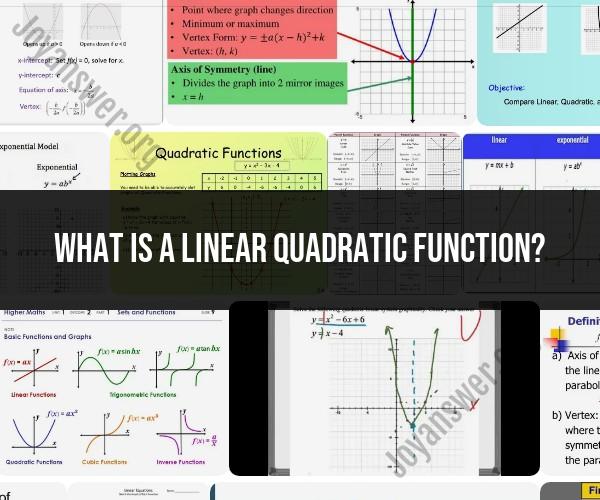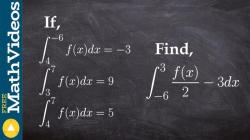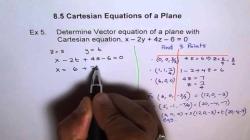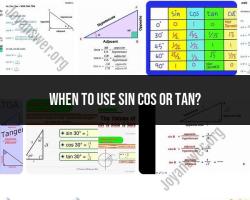What is a linear quadratic function?
A linear quadratic function is a mathematical function that combines both linear and quadratic terms. In other words, it contains elements of both linear functions and quadratic functions. Let's break down these components:
Linear Function: A linear function is a mathematical function of the form "f(x) = ax + b," where "a" and "b" are constants. In a linear function, the variable "x" is raised to the power of 1, and the graph of the function is a straight line. Linear functions have a constant rate of change, meaning that for every unit change in "x," the change in "f(x)" is constant.
Quadratic Function: A quadratic function is a mathematical function of the form "f(x) = ax^2 + bx + c," where "a," "b," and "c" are constants, and "x" is raised to the power of 2. The graph of a quadratic function is a parabola, and it can open upward or downward. Quadratic functions exhibit nonlinear behavior, with the rate of change in "f(x)" not being constant but dependent on the value of "x."
A linear quadratic function combines both linear and quadratic terms in a single equation. It has the form:
f(x) = ax^2 + bx + c
In this equation:
- The "ax^2" term represents the quadratic component, creating the curvature of the graph.
- The "bx" term represents the linear component, contributing to the slope or incline of the graph.
- The constant "c" is an additional constant term.
The graph of a linear quadratic function is a parabola, but it may also exhibit some linear characteristics, depending on the values of the constants "a" and "b." The specific shape of the parabola and the position of its vertex depend on these constants. Depending on the values, the parabola may open upward or downward and may be narrower or wider.
Linear quadratic functions are commonly encountered in various fields, including physics, economics, engineering, and mathematics, as they can model a wide range of real-world phenomena that involve both linear and quadratic relationships.












